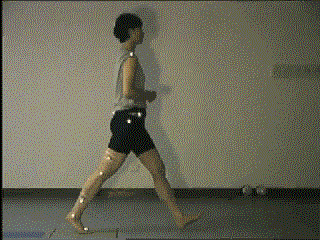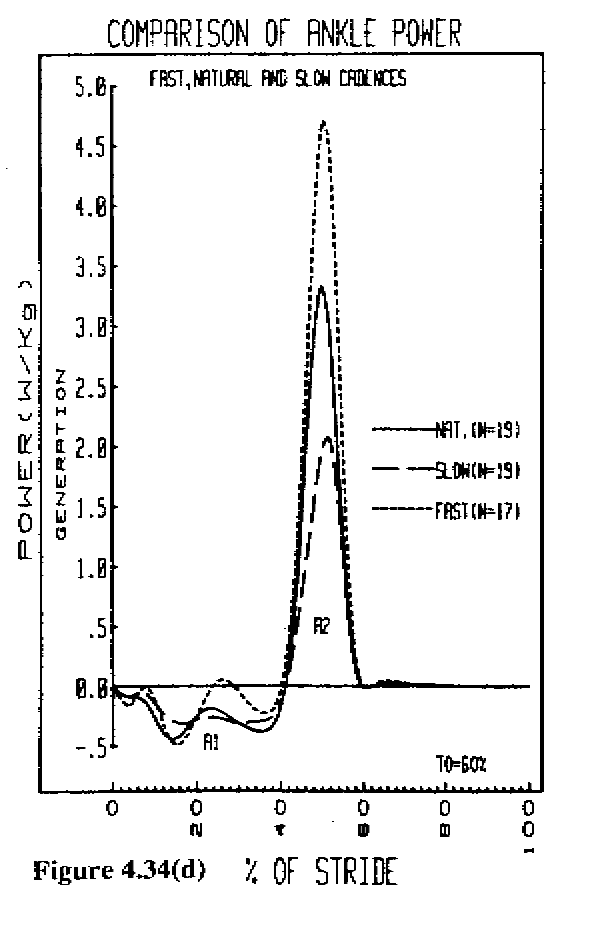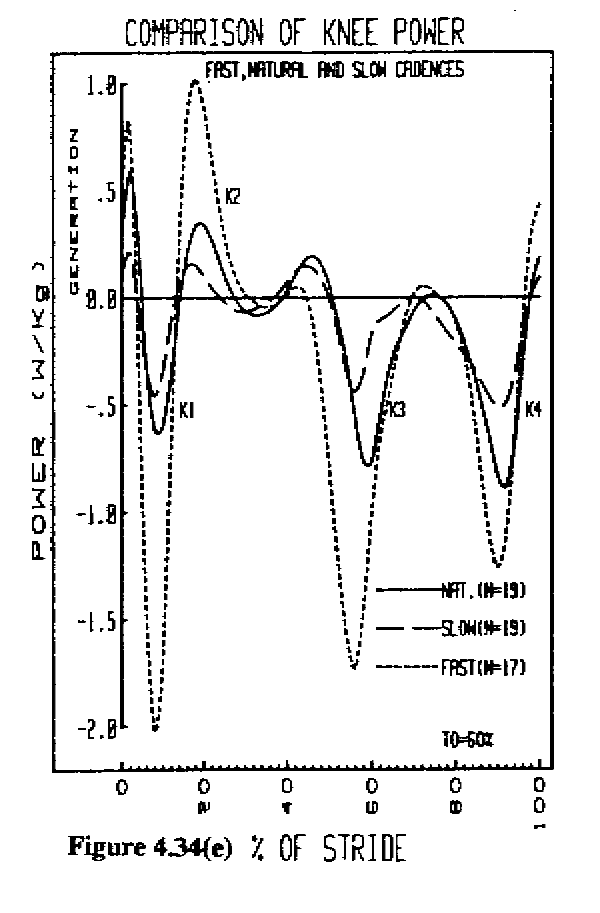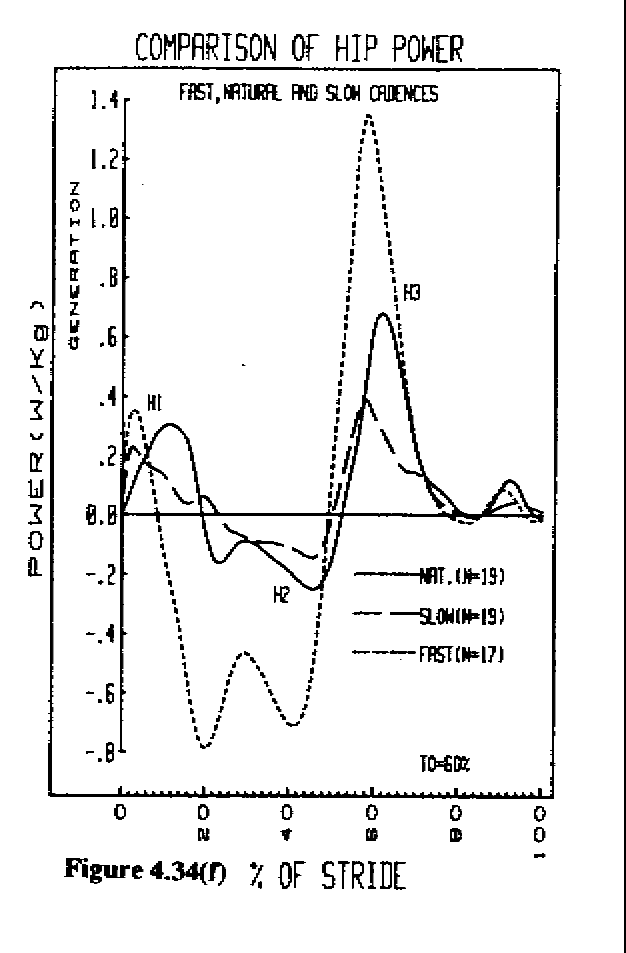 Teach-in
2001 : Push-off & The Effect of Speed on Gait
Teach-in
2001 : Push-off & The Effect of Speed on Gait
by Chris Kirtley, The
Catholic University of America, Washington DC
 One of the
most profound (and still somewhat controversial) findings of early gait
analysis studies was the outstanding contribution of ankle push-off, which
amounts to around 60-70% of forward propulsive power in natural, normal
gait (Winter,
1983 - 15 normal subjects, using a 2D model & inverse dynamics).
One of the
most profound (and still somewhat controversial) findings of early gait
analysis studies was the outstanding contribution of ankle push-off, which
amounts to around 60-70% of forward propulsive power in natural, normal
gait (Winter,
1983 - 15 normal subjects, using a 2D model & inverse dynamics).
This work transformed our understanding of gait, since previously (before
computerized video analysis) the ankle was thought to be relatively unimportant
for propulsion (Perry, 1992).
Winter's reports of the joint powers slow, natural and fast cadences
(see graphs below from page 48 of his 1991
book) seem to indicate an increase in all power bursts at higher speeds
- in particular, the A2 burst appears to be almost directly proportional
to speed.



In 1997, Chen
published the results of his 3D study of ten healthy children, in which
he calculated the energy contribution of each joint to propulsion, as the
area under the positive, concentric part, of the power curve at three speeds.
It can be seen that, although the ankle energy is predominant at low speeds,
the contributions of the hip and knee become progressively more important
at higher speeds. In fact, ankle push-off seems to remain roughly constant.
|
Walking Speed
|
Ankle
(A2)
|
Knee
(K2)
|
Hip
(H1+H3)
|
Total
|
|
Slow (J/kg)
|
0.22
|
0.04
|
0.08
|
0.35
|
|
% Total
|
63
|
11
|
23
|
|
|
Natural (J/kg)
|
0.21
|
0.06
|
0.12
|
0.39
|
|
% Total
|
54
|
15
|
31
|
|
|
Fast (J/kg)
|
0.19
|
0.10
|
0.15
|
0.45
|
|
% Total
|
42
|
22
|
33
|
|
 Questions
Questions
-
Do you agree with Perry or Winter?
-
What is the purpose of the A2 push-off burst?
-
Do you agree that it remains constant as walking speed increases?
-
Why should the knee and hip be favored progressively as speed
is increased?
-
Does you lab routinely adjust its normative data to account
for changes in walking speed?
Email your answers to [n/a] 
 What
we said on the CGA list
What
we said on the CGA list
Bibliography
Chen
IH, Kuo KN & Andriacchi TP (1997) The influence of walking speed on
mechanical joint power during gait Gait & Posture Volume 6, Issue 3:
171-176
Kirtley
C & Whittle MW (1985) Influence of Walking Speed on Gait Parameters.
Journal of Biomedical Engineering, 7: 282-288.
Perry J. (1992). Gait Analysis Normal and Pathological
Function. Slack, Inc, Thorofare, NJ.
Winter
DA (1983) Energy generation and absorption at the ankle and knee during
fast, natural, and slow cadences. Clin Orthop. May;(175):147-54.
 Back to Teach-in page
Back to Teach-in page



 One of the
most profound (and still somewhat controversial) findings of early gait
analysis studies was the outstanding contribution of ankle push-off, which
amounts to around 60-70% of forward propulsive power in natural, normal
gait (Winter,
1983 - 15 normal subjects, using a 2D model & inverse dynamics).
One of the
most profound (and still somewhat controversial) findings of early gait
analysis studies was the outstanding contribution of ankle push-off, which
amounts to around 60-70% of forward propulsive power in natural, normal
gait (Winter,
1983 - 15 normal subjects, using a 2D model & inverse dynamics).